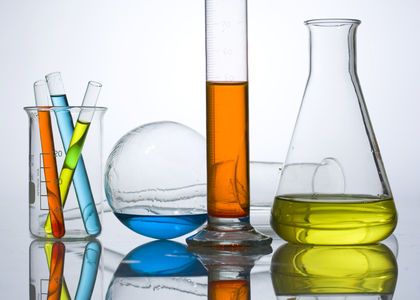Acid
An acid is a substance which, when dissolved in water produces hydrogen ions, H as the only positive ions. An acid can also be defined as the in which it turn blue litmus paper red.
TYPES OF ACIDS
There are type of acid they include:
A. organic acids.
B. inorganic acids.
Organic acids: it can be defined as the process which occur as natural product in plant and animals material. e.g citric acid from grapes, amino acid from protein, lactic acid from milk etc.
Inorganic acids: it can be defined as the process which are prepared from inorganic matter. e.g trioxonitrate (v) acid , trioxocarbonate (iv) acid etc.
The strength of an acid determined by the concentration of hydrogen ions in its solution. Strong acids ionize completely in water to give hydrogen ions and anions. The concentration of hydrogen ions is very high in strong acid solution. Weak acid are only partially ionized in water with low concentration of hydrogen ions e.g ethanoic acid, trioxocarbonate (iv) acid, tetraoxophosphate (v)acid.
When a large amount of water is added to a small amount of acid, the resultant acid solution is dilute. If it is only a little water added to a large amount of acid, the solution will be concentrated.
Physical properties of acid
- Dilute acids have sour taste.
- Acids turn blue litmus red.
- The concentrated form of strong acids are corrosive.
Chemical properties of acid
Reaction with Metals: Metals which are much more electropositive than hydrogen, react with dilute acids to liberate hydrogen gas. Dilute trioxonitrate (V) acid is an exception, because it is a strong oxidizing agent. Lead, which is only slightly more electropositive than hydrogen dose not liberate hydrogen gas with dilute acids, but will give similar reaction with hot concentrated acid.
Reaction with bases and alkalis: acids react with insoluble bases and alkalis to form salts and water only. The reaction is known as neutralisation reaction.
Reaction with trioxocarbonates (iv): acids react with trioxocarbonate (iv) to liberate carbon (iv) oxide.
Preparation of acids.
- By the reaction between an acid anhydride and water.
- By direct combination of constituent elements in the presence of suitable catalyst.
- By displacing a weaker or more volatile acid from its salts by a stronger or less volatile acid.
Uses of acid.
- In manufacturing of fertilizers, dyes, detergents, explosives, paint, soaps, textiles, drugs, plastics and other chemicals.
- In dissolving metals or to remove rust.
- In the production of salts, soft drinks and baking powder.
- As food preservatives and mild antiseptic or germicide.
- In oil refineries.
- As an electrolyte in lead-acid accumulator.
- As a drying, dehydrating and oxidizing agent.

@helenkim got you a $1.6 @minnowbooster upgoat, nice! (Image: pixabay.com)
Want a boost? Click here to read more!